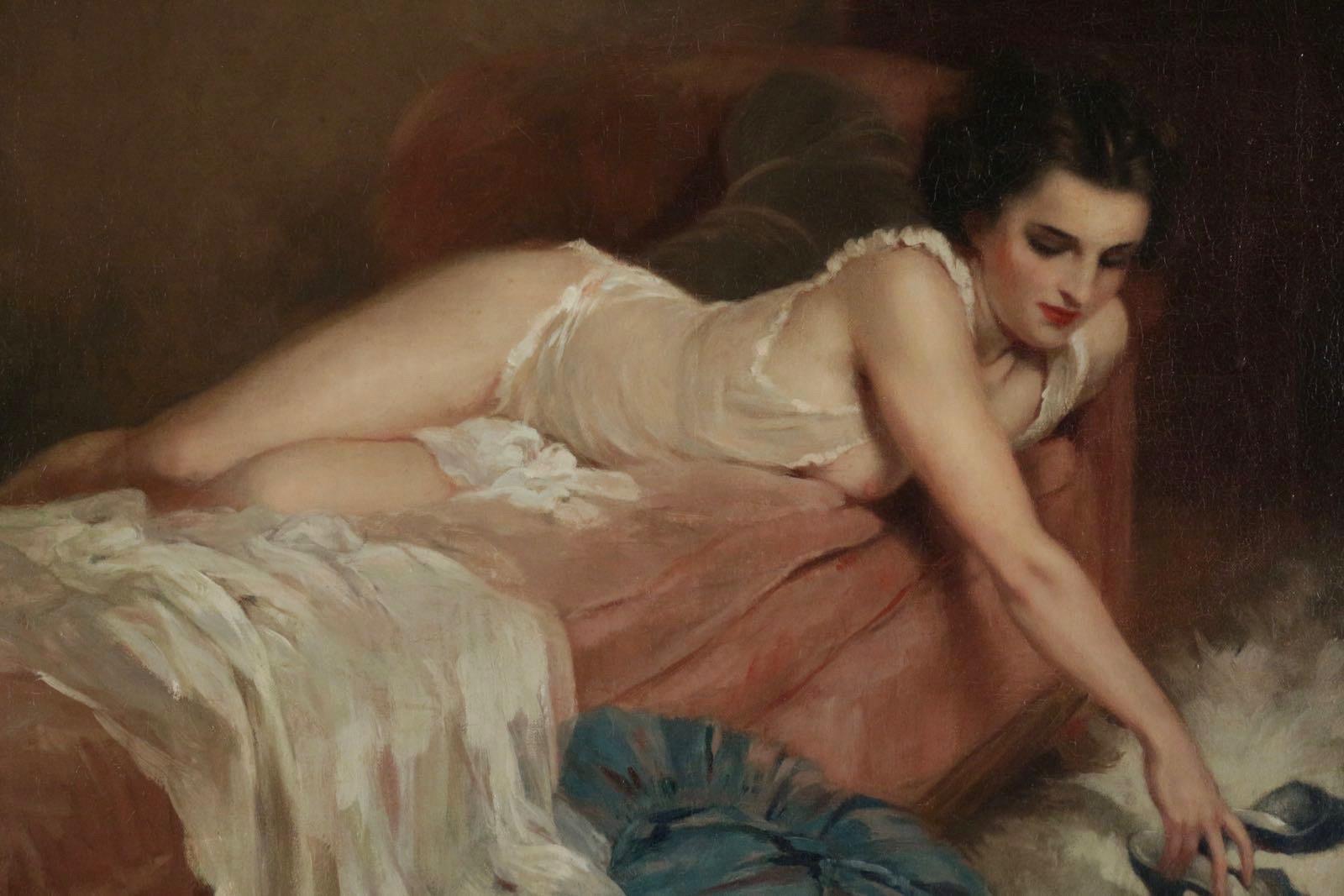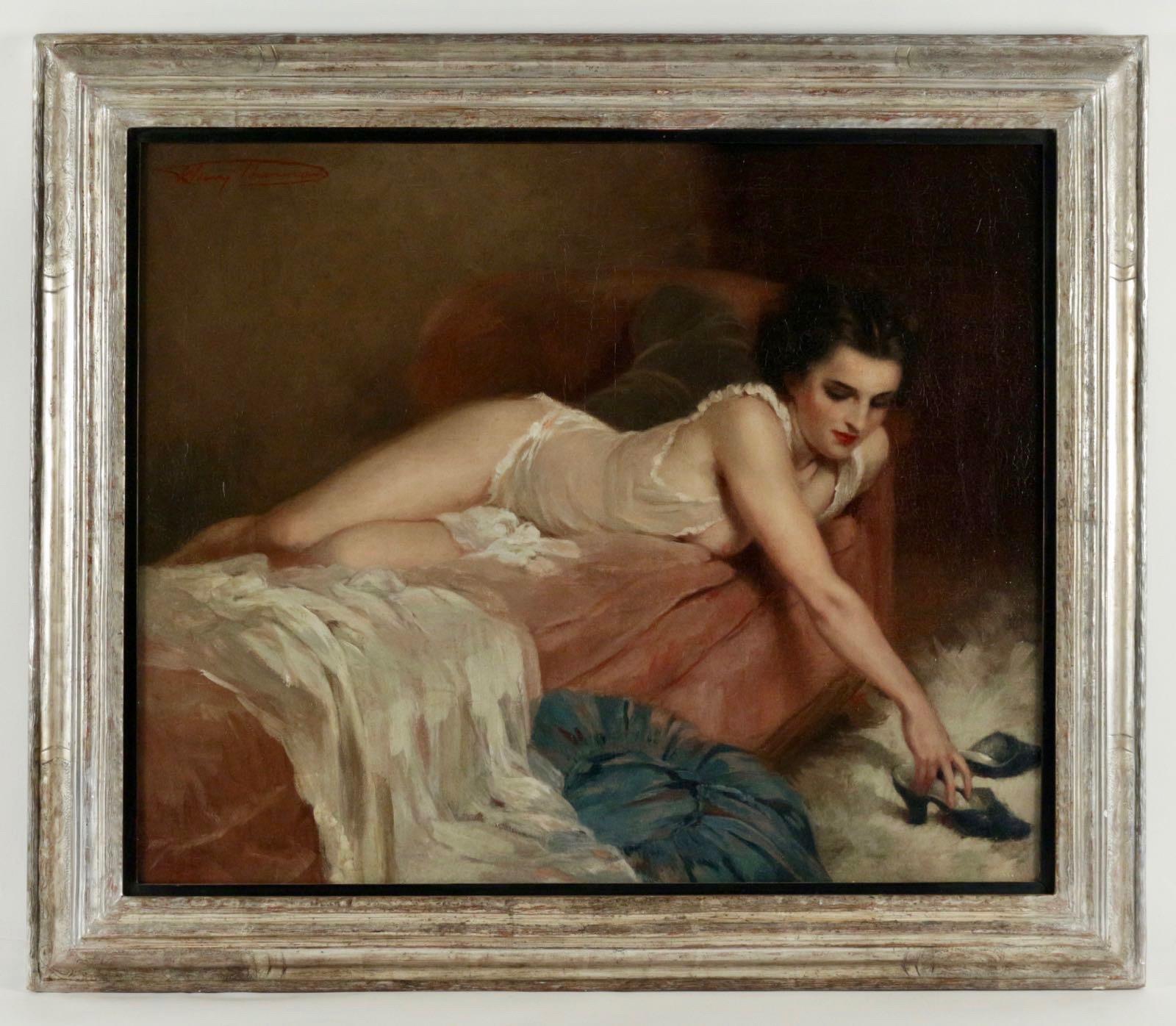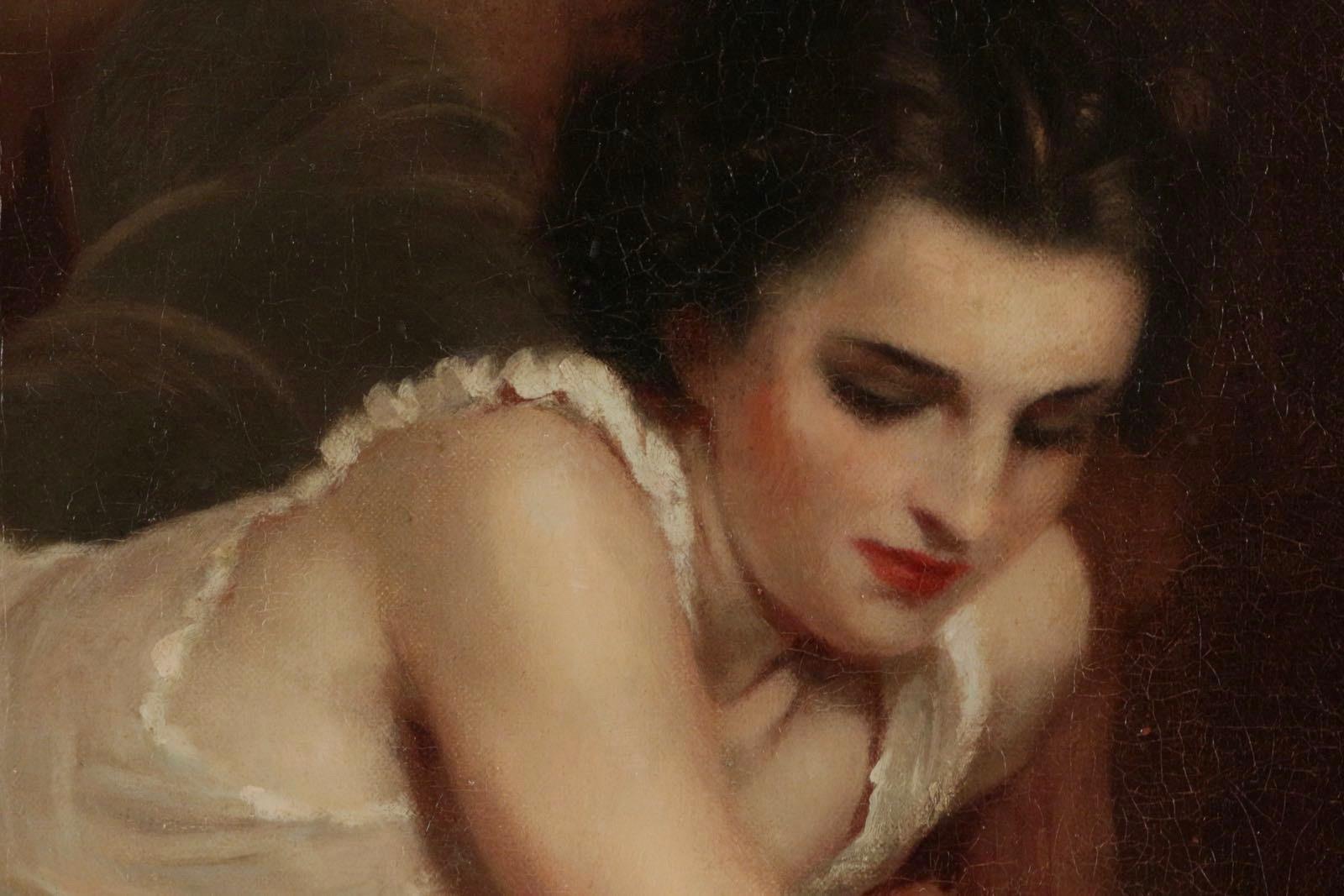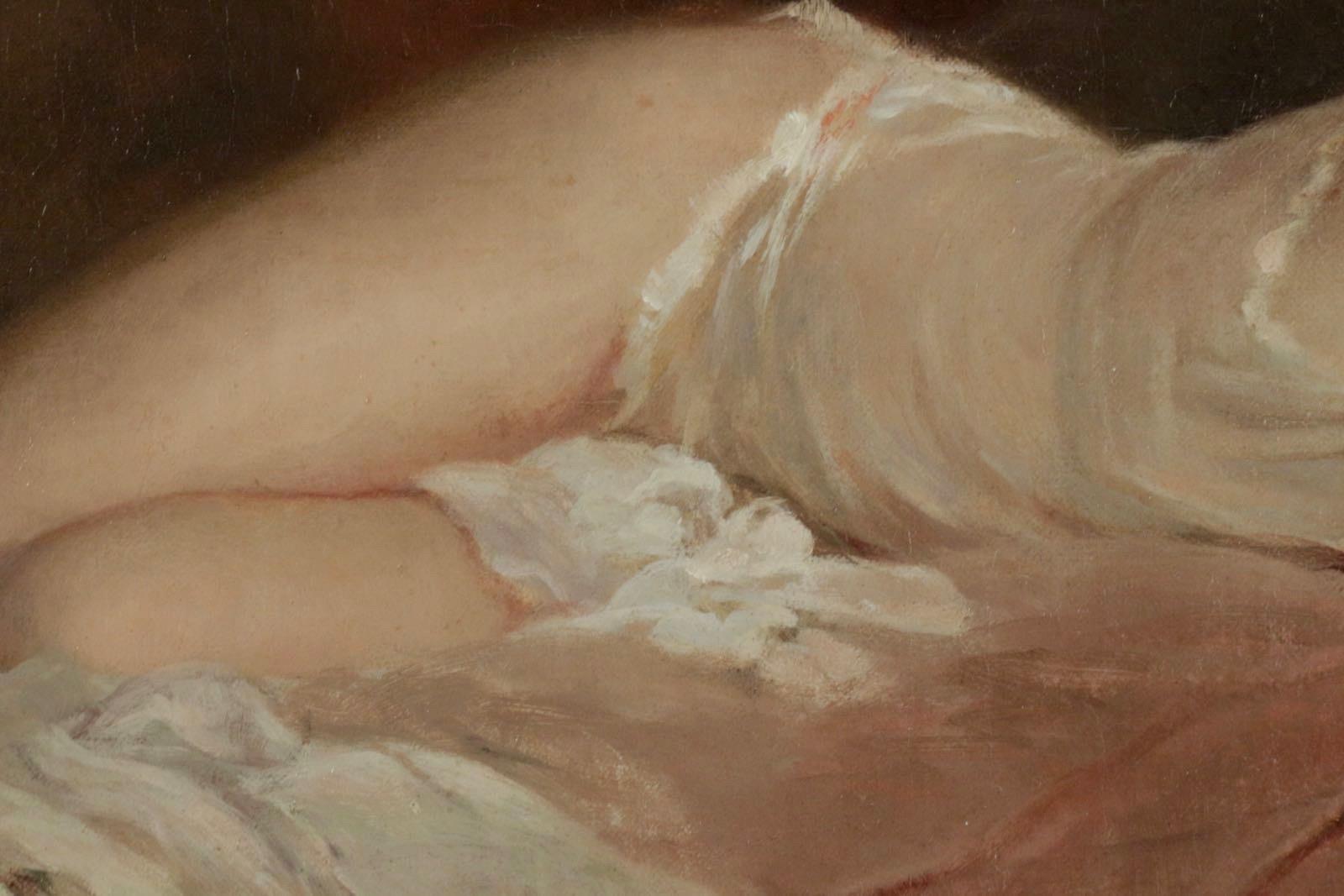Henry Thomas
The green shoes
Oil on canvas
Sign top left
Dimensions: 61 x 76cm
With frame: 77 x 90 cm
Price: 18000 €
A pupil of the Brussels Academy, he exhibited at the Cercle Artistique in 1906, 1909 and 1921 and at the Société Nationale des Beaux-Arts from 1906 to 1910. The artist practices his profession between Brussels and Paris, in the extension of what previous colleagues (Odilon Redon, Felicien Rops, among others) had undertaken: to open up and make the axis between the two capitals prosper. His career is long and his art recognized; it is collected in Europe by museums and private collectors.
In addition to his qualities as a painter and sculptor, he is known to have worked as an aquafortist. It illustrates “La Toison de Phryné” written by Théodore Hannon (1913) and the 1925 reissue of “Diabolic” by Barbey d’Aurevilly. He paints the universe and the setbacks of the bourgeois trapped in the nocturnal circus of Parisian and Montmartre nights. Subsequently, he depicts the worldly atmosphere of the interiors of the 1920s. Women adorn themselves with jewelry and surround themselves with silky fabrics.
This painting represents one of his favorite models. The tone is coquettish, pleasing at first glance, delicately cheeky and erotic at second. The painter likes to wrap his lady in a cocoon of delicate fabrics. The satiny and transparent tones echo the model’s alabaster skin. The study is inspired by the classic and neutral academic nude to bring it to the dawn of anecdote and narration. A lady, while she is getting dressed, bends over the bed to retrieve her house shoe. His demeanor is happy, his face fresh and rosy. The tone is like the Fragonards of the 18th century, it celebrates the joy of pleasures and the celebration of life.
Museums:
• Museum of Fine Arts in Brussels, Bruges, Liège and Barcelona.
Bibliography:
• Emmanuel Bénézit, Dictionary of painters, sculptors, designers and engravers , t. X, Librairie Gründ, reed. 1976, p. 154





